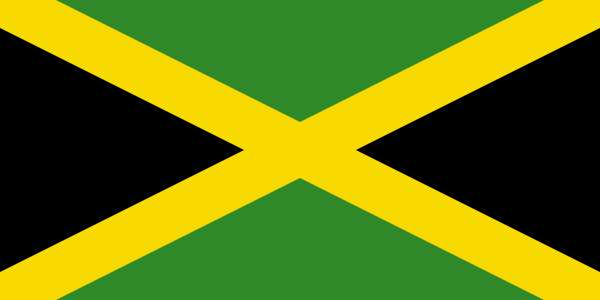The Jamaican Flag

The Jamaican flag was officially adopted on August 6, 1962 - Jamaica’s Independence Day. With its striking diagonal cross, vibrant colors, and rich symbolism, the flag remains a potent emblem of national pride and heritage.
Design and Symbolism
The flag features a gold saltire (diagonal cross) dividing four triangles - green at the top and bottom, black at the hoist and fly. The cross measures one-sixth of the flag’s length, while the recommended shade of green is Emerald T8 17, British Admiralty Bunting Pattern. The proportions follow an Admiralty Pattern at 2:1.
- Black: Symbolizes the strength and creativity of the Jamaican people.
- Gold: Reflects the island’s natural wealth and the warmth of the sun.
- Green: Represents hope, agriculture, and lush vegetation.
The guiding motto is: “The sun shineth, the land is green and the people are strong and creative.”
Respect and Usage
The Jamaican flag holds deep national significance, and strict etiquette governs its display:
- Avoid letting the flag touch the ground.
- Use it only for dignified purposes; never for casual decoration on disposable items.
- When worn or faded, it should be respectfully burned rather than repurposed.
- No foreign flag should be flown publicly in Jamaica unless the Jamaican flag is also displayed, except at embassies or consulates.
- When multiple flags are raised together, the Jamaican flag must not be smaller or placed lower than the others.
- During processions, the Jamaican flag goes on the marching right or at center-front if in line.
- It may not be draped over vehicles unless on official state or military occasions.
- It should be displayed at every polling station on election day.
- When ordered at half-mast, the flag is raised to the peak momentarily before lowering and similarly before it is finally taken down.
- During hoisting, lowering, or parades, all present should stand at attention, men removing hats, and uniformed persons saluting.
Through its vibrant design and thoughtful protocols, the Jamaican flag unites the nation in shared identity and respect. It remains a rallying symbol of the island’s perseverance, optimism, and cultural pride.

